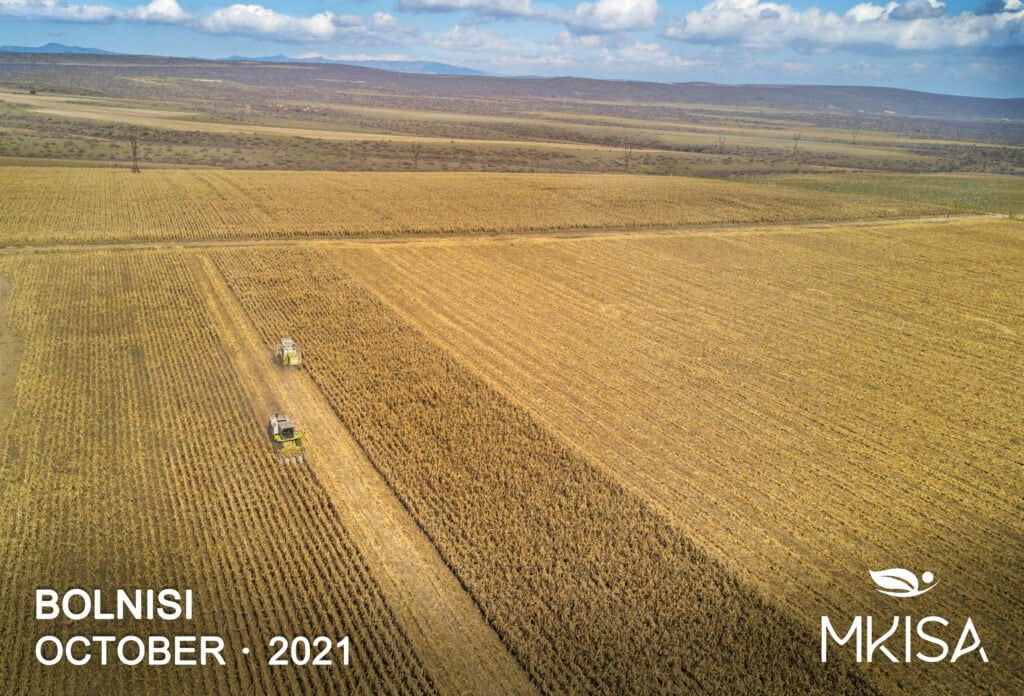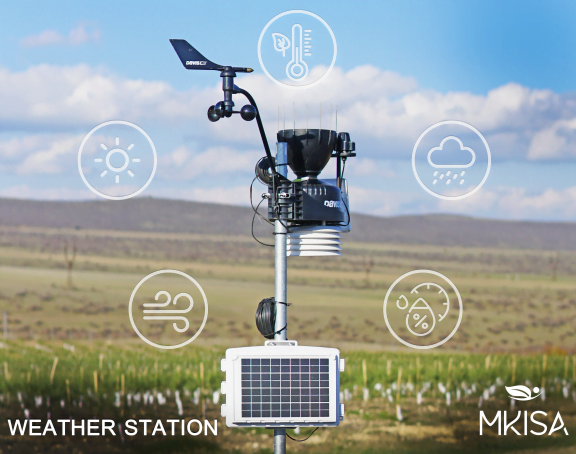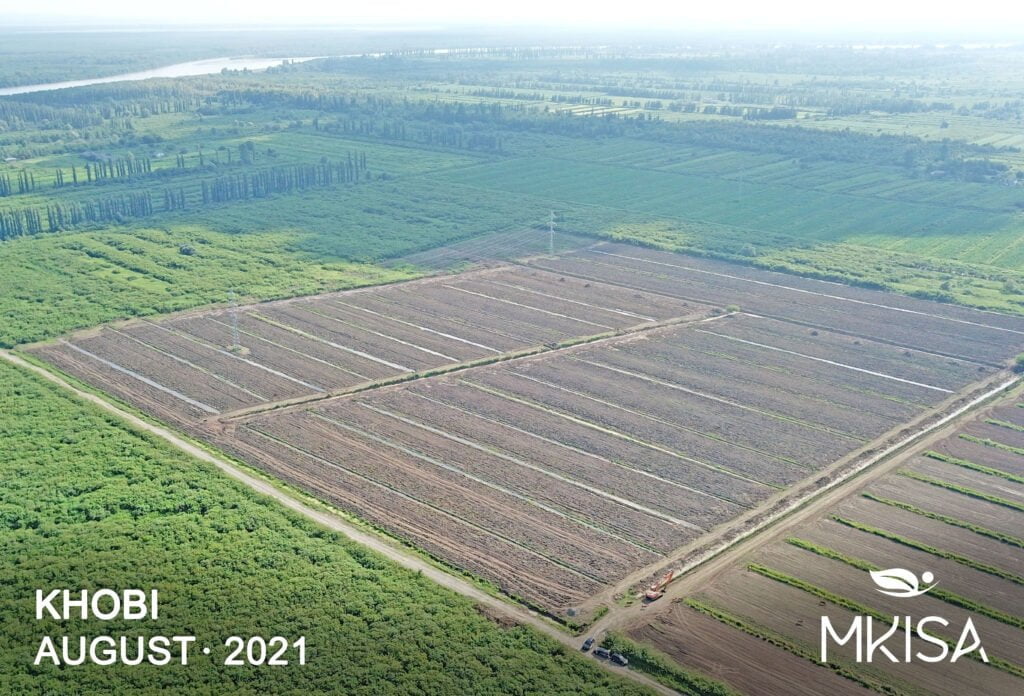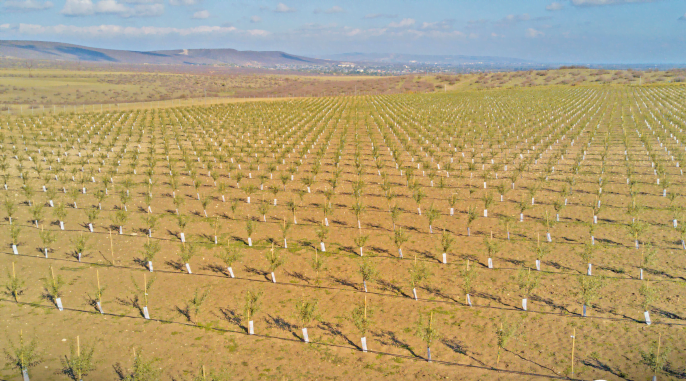Digitalization and mechanization become a part of Georgian agriculture as an increasing number of producers invest in precision farming technologies. Mkisa is a Georgian company contributing by building an agricultural business where almost every decision is based on data analysis taken from digital tools directly on the field. In the next few years, Mkisa plans to develop the whole value chain production and become a consultancy service provider for others.
The company started its operations in 2020 and has already planted 10 ha of almonds and 24 ha of maize, while 30 more hectares of almonds and 20 ha of blueberry orchards are planned to plant in the first quarter of 2022. First harvests are expected in 2023. In total, the company owns 200+ ha of land in east and west Georgia and has plans to increase it in forthcoming years. The eastern sites are intended for almonds production, while western sites are for the blueberries.

The decision to plant almonds and blueberries was based on market research, which revealed that almonds and blueberries were the optimal choices in terms of the Return on Investment (ROI) indicator and the time needed to receive the first harvests, compared to other considered alternatives. They also took into account government programs’ and the banks’ potential support while choosing the crops.
EastFruit discussed the company’s experience in digital agriculture and the future plans with its executive director Gigi Gachechiladze.
What kind of digital tools are you using to manage the orchards or planning to use in the future?
We’ve invested in a weather station, plant and soil sensors, as well as drones so far. In combination, these tools allow us to plan and manage almost all operations in the orchards based on precise and live data.

Weather station: price, components, and applications
We bought a weather station from the local representative of USA-based company DAVIS — CVIG. The bundle – weather station covering 40 ha, and leaf and soil sensors for 10 ha – cost 15 000 GEL ($4,644) in 2021. We are planning to add more sensors to cover a total of 40 ha of almond orchards in 2022.
Station has several transmitting nodes installed in the orchard. Each node is equipped with 3 types of sensors, soil moisture and temperature, and leaf wetness sensors. Nodes and sensors are fully autonomous in terms of electricity and the internet. Station uses solar panels as an energy source and 4G for the internet connection.
Analysis of historical data taken from the sensors is crucial for planning or adjustment of schedules and doses of pesticide, herbicide, fungicide, and fertilizer applications, while live data analysis guarantees timely agronomic measures. Agronomists agree that even hours matter when taking preventive measures against the diseases.
Each sensor gives different kind of information to plan various activities. Soil moisture sensor gives data crucial for irrigation and application management. The soil temperature sensor shows the temperature in the ground to analyze the root development of plants. Leaf sensor gives dates and duration of leaf wetness, helping agronomists to assess the effectiveness of applications and rainfalls.
Weather stations can give much more indicators if needed, but on a daily basis we monitor soil moisture and temperature, rainfalls, evapotranspiration (ET), humidity, wind speed, wind direction, and THSW (temperature, humidity, solar radiation, and wind) index. Station also forecasts the weather for the next 7 day period. Each data is crucial to analyze the real state of plants.
Agriculture drones
We have our own drone and are in the research and development stage in this direction. Drones can be equipped with a multispectral camera which gives multispectral images for analytics. We think that this technology will be useful for large fields and orchards as it can identify problematic areas of land and give signals to an agronomist to take a closer look at that area.
We also used an agricultural drone to spray 24 ha maize fields against the disease last year. It was the right decision, as plants were already tall and it was impossible to spray them conventionally. I find it helpful to use drones for spraying annual crops, while I’m a little skeptical about their use in the case of tree orchards. I believe conventional methods will be much quicker in orchards compared to drones, taking into account the short battery life and small tanks of drones.

Labor shortage and mechanization
We consider labor shortage during pruning and harvesting seasons as one of the future challenges. To meet this challenge our almond orchard will be fully mechanized since 2023. As for blueberry production, we consider buying mechanical harvesters. We’ve even selected the specific harvester and plan to attend the harvesting to assess it in the working process. This is the air-jet harvester produced in Serbia, which harvests berries by imitating storm and shaking plants with pulsating air jets. According to the producer’s information, the new technology less damages the fruit in the harvesting process and makes it suitable for selling on the fresh market, but we will have a clear view of it only after the tests in the field.
What are the future plans of Mkisa?
Our intention is not only to become a large-scale producer but to develop self-sustainable and green energy orchards, along with the whole value chain from planting to sales.
In 2023 we plan to build a cold storage and processing facility for blueberries in Tskaltubo or Khobi site, as well as receive certifications for both blueberry and almond production — GLOBAL G.A.P. and HACCP accordingly.
Today we work with local and international professionals to manage processes in the orchards. In blueberry orchard development, Mkisa relies on the knowledge of local consultants but receives coaching from Spain and Poland to manage almond orchards. After gaining the necessary expertise, we’ll become service providers ourselves. By that time our team will have valuable experience in digital agriculture as well, as we’ve already invested in digitalization and will continue in the future.
The use of the site materials is free if there is a direct and open for search engines hyperlink to a specific publication of the East-Fruit.com website.




